Ybarra Lines M.S Cabo San Roque 1957 & the Cabo San Vicente -1959
Please Note: Firefox and some
iPad’s or iPhone’s, etc are
not suitable
Use Internet
Explorer or Google for this page to load perfectly!
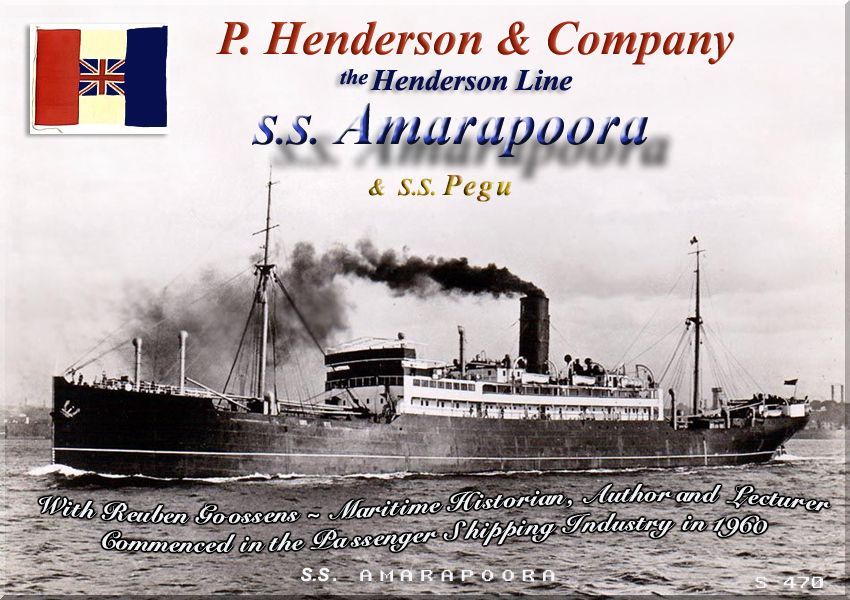
On this special feature, I will cover two
ships from a company that many may well never have heard off, yet in many ways
they were quite remarkable in their own way! The first is the S.S. Amarapoora
(IV) completed in July 1920, and her somewhat smaller sister the S.S. Pegu (IV)
completed in December 1921. However, their stories will follow this somewhat
little known company’s background below, which is quite comprehensive,
and I hope interesting? But, you will be surprised how much you really knew
about
This page is in
Four Parts; Part
One; Company background. Part Two; S.S. Amarapoora.
Part Three; S.S. Captain
Hobson. Part Four; S.S.
Pegu.
Part
One
Company Background
P. Henderson & Co from 1834:
“P. Henderson & Company”,
which later became better known as just “the Henderson Line”, was a ship owning, and/or a management company based in
The brothers together invested in their first ship, the Peter Senn, and the business grew from there. Sadly Patrick passed away in 1841, and the business was taken over by his brother, Captain George Henderson. In 1848 George took into partnership a young man who had great capabilities, Mr. James Galbraith who rapidly expanded the operation from being merchants, to actual ship owners as well as ship managers.
The company even commenced trading to
Albion Shipping Company:
Then it came about that in 1860, there was
very little cargo laden in
S most ship lovers will well know, the Albion
Shipping Company became the dominant British company on the
When in 1869 the Suez Canal was
opened, it ensured that all ships would a more economic voyage, especially on voyages
to Asia, therefore in 1870 P. Henderson & Co., commenced a steamship
service from Glasgow, Liverpool to Burma. At that time there was no
mail contract available on this service as all mail generally went via
In 1874 the British & Burmese Steam
Navigation Company Ltd (BBSN) was formed to increase capital and spread the
risk of the Burmese part business as it the company grew from using sailing
ships to the use of more expensive and larger steamships. BBSN also took over
the fleet of steamships on the
P. Henderson and Co., pioneered the first frozen meat shipment from New Zealand to London in 1882, using refrigerated sailing ships, because at that time there were no coal loading facilities available en route, and thus a steamship had large coal bunkers that they took up too much valuable cargo space.
Shaw, Savill & Albion Line:
Steam ships rapidly increased trading
possibilities and at that time, capital requirements were unavailable to P.
Henderson or the Albion Shipping Company to fulfil on their own, therefore in
1882, the Albion Shipping Company amalgamated with Shaw, Savill & Co.,
to form the Shaw, Savill and Albion Company Ltd. After
the amalgamation, P. Henderson & Co., continued as managers and
loading brokers for the newly created company in
James Galbraith who had been the driving force of P. Henderson & Co., sadly passed away in 1884, and his death marked the end of an era of private capital, of pioneering and of expansion into countries that were once unknown, and technologies.
P Henderson
In 1905 the P. Henderson cargo ship the
SS Ava sadly ran aground and she was totally wrecked some 9 nautical miles or
17 km from
In that very same year P Henderson lost
another ship to enemy action. This was the 1913 built, 6,348 GRT
passenger-cargo liner the SS Pegu (3) which was on a voyage from
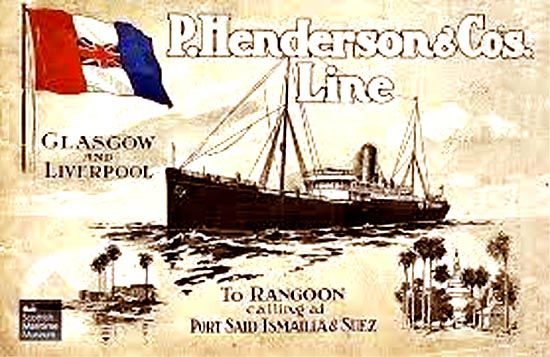
A P. Henderson line poster from around 1919
However, during the 1920s & 30s P. Henderson commenced to build a number of new ships, including the SS Pegu (IV) being a sister ship of the Amarapoora (IV) I will covered towards the end of this page.
PS: Sadly P.
Elder, Dempster Lines:
In 1947 Elder, Dempster Lines decided to charter the P. Henderson’s fleet, but five years later in 1952, Elder, Dempster decided to take over the company and continue a complete modernisation of the Henderson fleet, constructing new motor ships, which continued until 1961.
It was in 1965 that “Ocean
Steamship Company” acquired control of the Elder, Dempster
group. But then in 1967 the Six Day War erupted and
Part
Two
S.S. Amarapoora
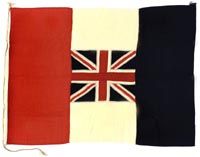
This is the “P. Henderson & Company” House Flag
Construction & Specifications:
The S.S. Amarapoora was built at a cost of
£406,960 by William Denny & Sons, Ltd, Dumbarton in Yard N° 1062, for the
Scottish P. Henderson & Company of
The 8.084 GRT (Gross Registered Ton) S.S. Amarapoora had a length of almost 142 meters and her width was just over 18 meters. And she had a service speed of 13 knots. Her livery was as follows; her hull was painted Black and her Boot Topping being Maroon having a narrow white dividing line, and a white superstructure and topped with a tall slightly tilted black funnel. Her two tall Masts, Derricks and Ventilators and Masts were painted aluminium Grey. Being a typical Passenger-Cargo Liners, she had seven holds with space for 525,340 cubic feet of cargo. Her power plant contained; triple cylinder expansion steam engines constructed by the builder. However, her boilers were able to burn either oil or coal, but in 1929 she was converted to use pulverised pellets being an experiment on behalf of “Yarrows Ltd”, but soon she reverted to coal as these pellet tests proved to be unsuccessful.
Accommodations & Maiden Voyage:
The S.S. Amarapoora provided all First Class accommodations for 146 passengers, with the ship having a crew of 142. On Promenade Deck was her Main Lounge, Smoking Room, a Library and writing Room, with the Veranda far aft. Amidships were the best of the accommodations, with the rest, as well as the Dinning Room, being one deck down on Shelter Deck being one deck down.
When her fit out was completed in July 1920
she undertook her speed trails and achieved a good 14 knots. She was then
delivered to her owners. And she commenced her maiden voyage from Liverpool to
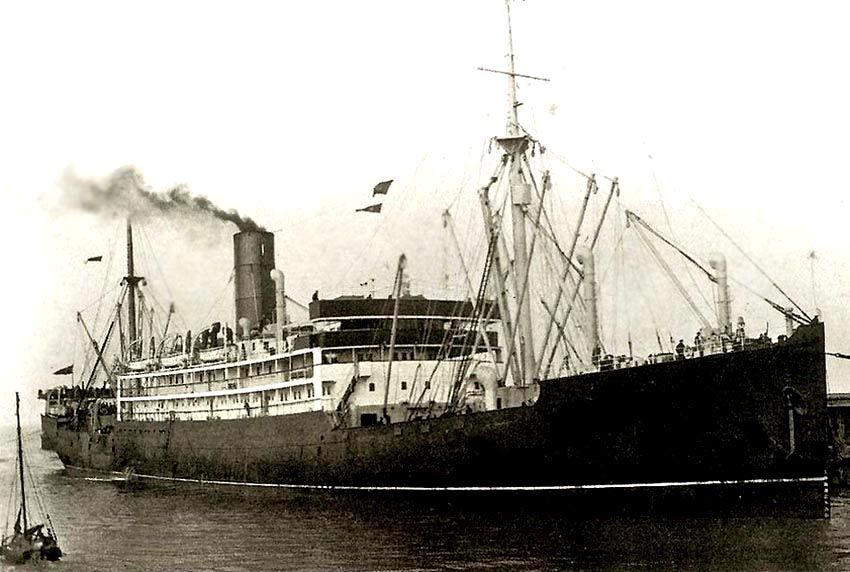
Here we see the S.S. Amarapoora as built, berthed later in the 1920s
The S.S. Amarapoora and her sister the S.S. Pegu,
which were built much at the same time, but due to delays the Pegu was
delivered towards the end of 1921, were built especially to serve on the
Liverpool to
Refitting the Amarapoora & the Pegu:
In 1935 the Amarapoora was given a considerable refit, which saw the promenade Deck forward section glazed in and her passenger accommodation was reduced to just 124 First Class, but offering more single and twin bedded cabins. In addition her public rooms also received extensive refurbishments, and she came out of this refurbishment a better ship! Around that same time the S.S. Pegu also received a similar refit. Upon completion, a massive advertising campaign commenced, as the three images below will attest to!
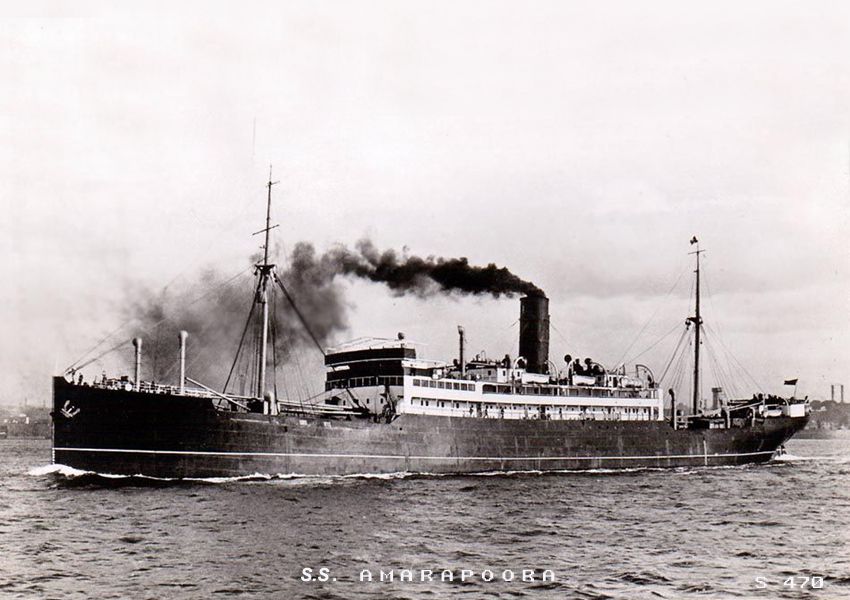
A
postcard of the S.S. Amarapoora after her refit, revealing her newly partially
glazed in promenade Deck
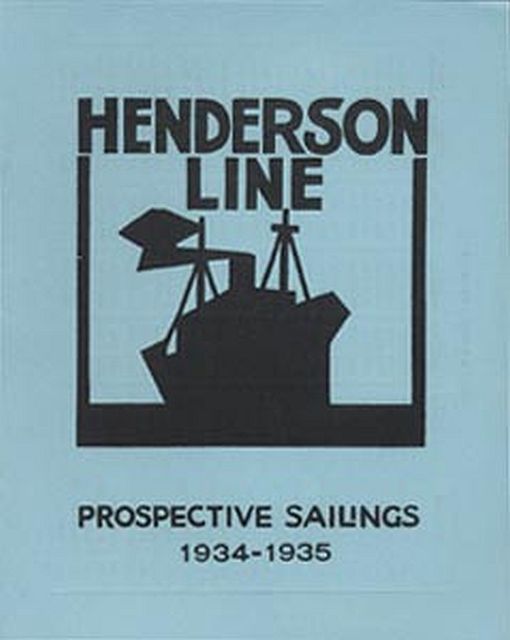
The above schedule reveals that both the S.S. Amarapoora and the S.S. Pegu sailed on the following schedule: Liverpool, Gibraltar, Marseilles, Port Said, Port Sudan, Rangoon, whilst on their return voyages they also called at London and then to Liverpool.
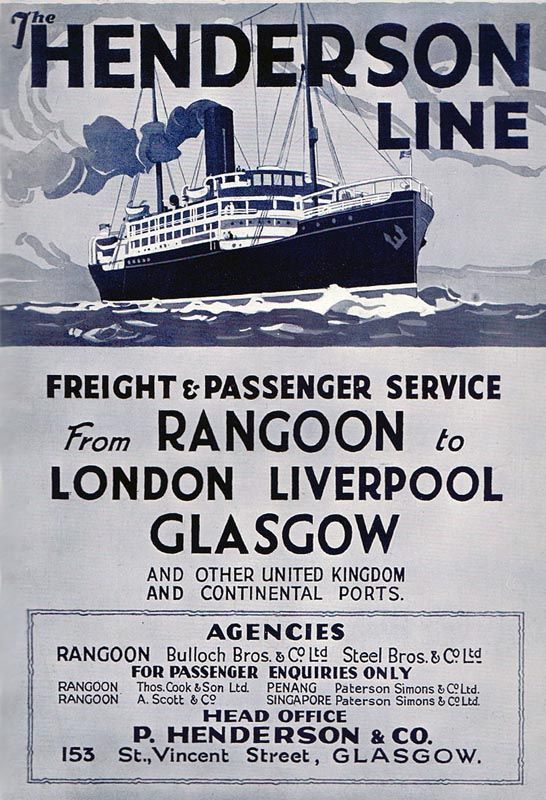
A promotions Agency poster for the Henderson Line
HMHS Amarapoora:
In 1939 preparation for WW II the Royal Navy requisitioned the S.S. Amarapoora and converted her into a hospital ship, which also saw her aft lower superstructure being extended aft. She then became the HMHS Amarapoora, and was equipped with 503 beds, with a medical staff of 103 persons, and a crew of 121.
She became the base hospital ship off St.
Margaret’s Hope & Scarpa Flow, both located off the Orkney Islands (
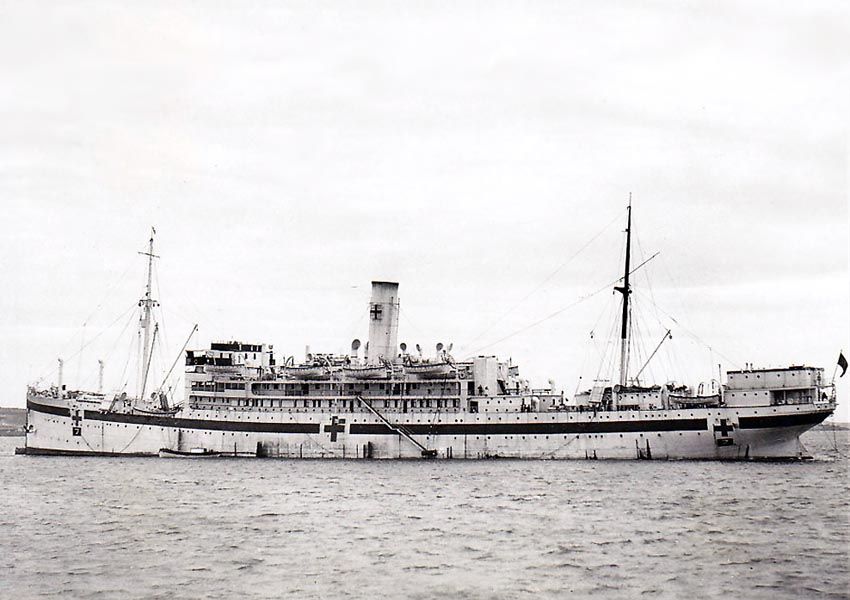
HMHS
Amarapoora is seen here at Scarpa Flow
Photograph
is courtesy - IWM 368
Then in October 1942 she was involved in
“Operation Torch,” carrying many wounded from North Africa to the
Then she was sent back to the
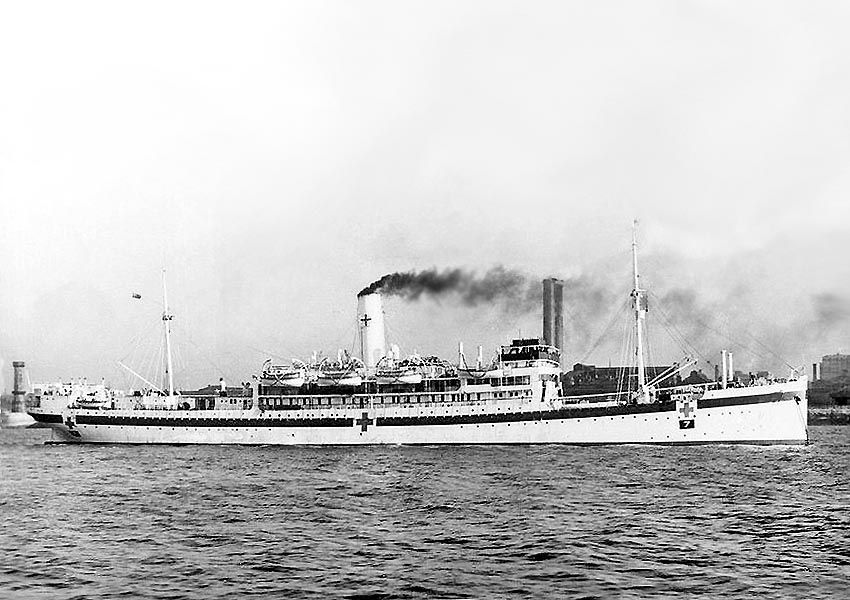
HMHS
Amarapoora is seen here after her 1943 refit
In August 1946 she was officially paid off by
the Royal Navy, but she was taken over and owned by the “Ministry of
Transport” (
S.S. Amarapoora Refugee ship:
In 1948 she was sent to the Clyde shipyards were all her wartime hospital fittings were removed and she was now converted into an austere ship suitable to transport up to 650 displaced persons, as the ship had been chartered by the “International Refugee Organisation” (IRO).
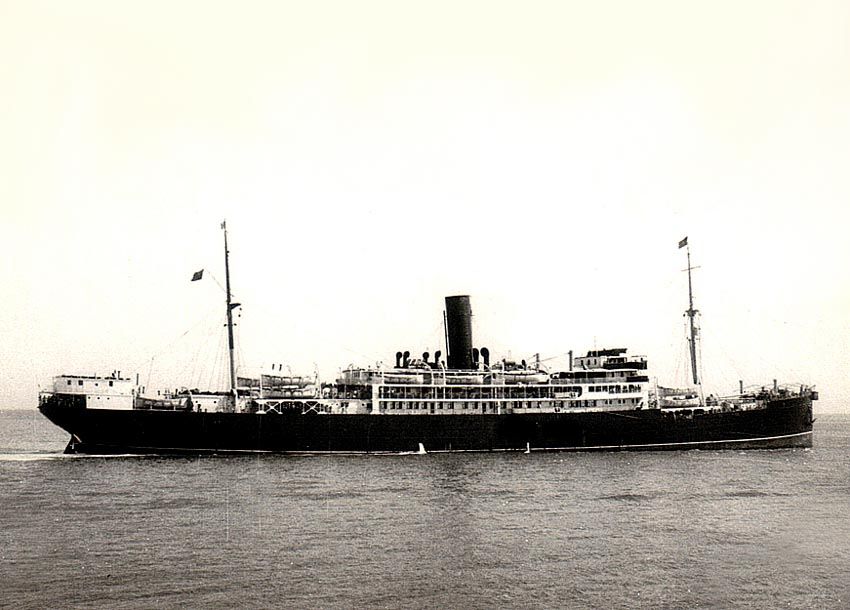
S.S. Amarapoora is looking her old self, but her accommodations were now very humble
Then she departed
The
Time for a Change:
When the IRO charter concluded, the Ministry of Transport offered this fine 32 year old girl to the New Zealand Government for migrant duties.
Part
Three
S.S. Captain Hobson
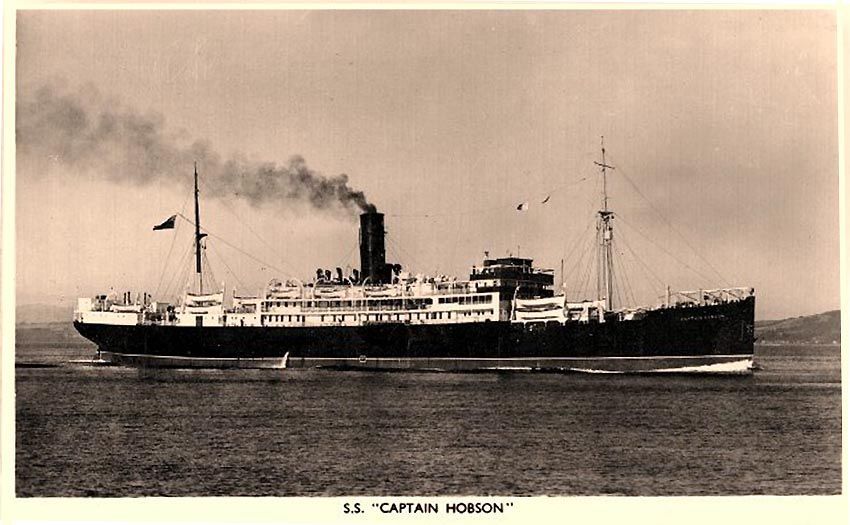
An early release of a S.S. Captain Hobson postcard
Refitted for a New Life:
In 1951 the renamed S.S. Captain Hobson headed
to Alex Stephens Sons in
Interior Photographs:
Below are two photographs of the ships
Lounges. These postcards were kindly provided by Johan van Omeren from Wanganui
NZ. He told me that his Mother in Law’s family had sailed on the Captain
Hobson from
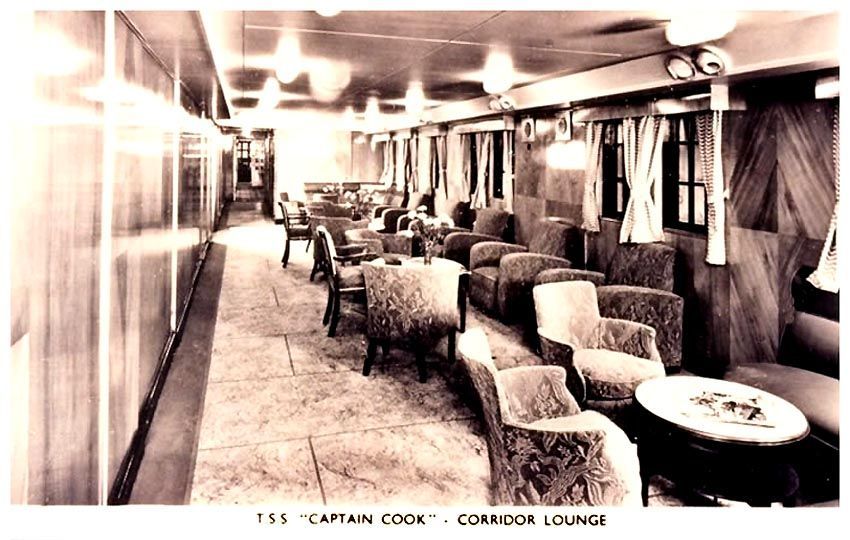
Here
we see the refurbished “Corridor Lounge”
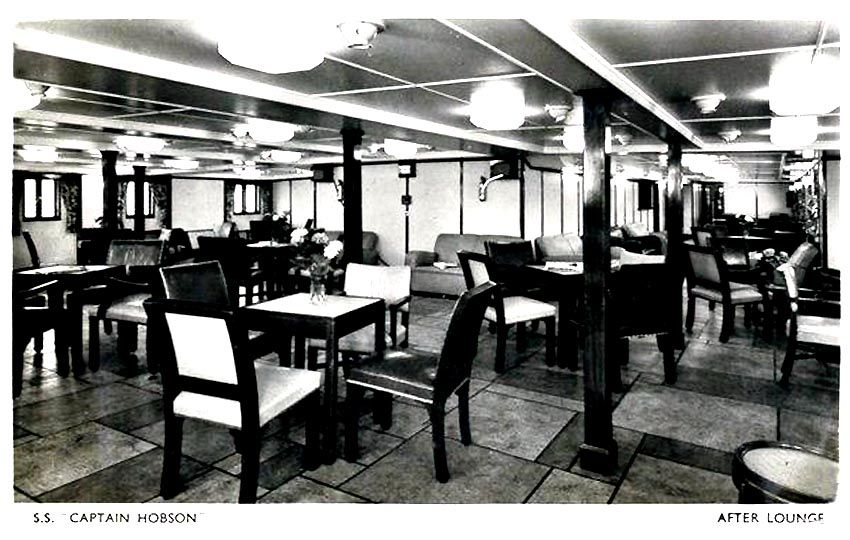
And
this is a more traditional looking After Lounge
Upon completion she was officially renamed
S.S. Captain Hobson S.S. Captain Hobson, and registered as having a tonnage of
9.306 GRT, but as in all her previous years, she remained registered n Glasgow.
The ex Amarapoora was of course owned by the “Ministry of
Transport” (
Maiden Voyage and her Story
to her End Days:
S.S. Captain Hobson departed
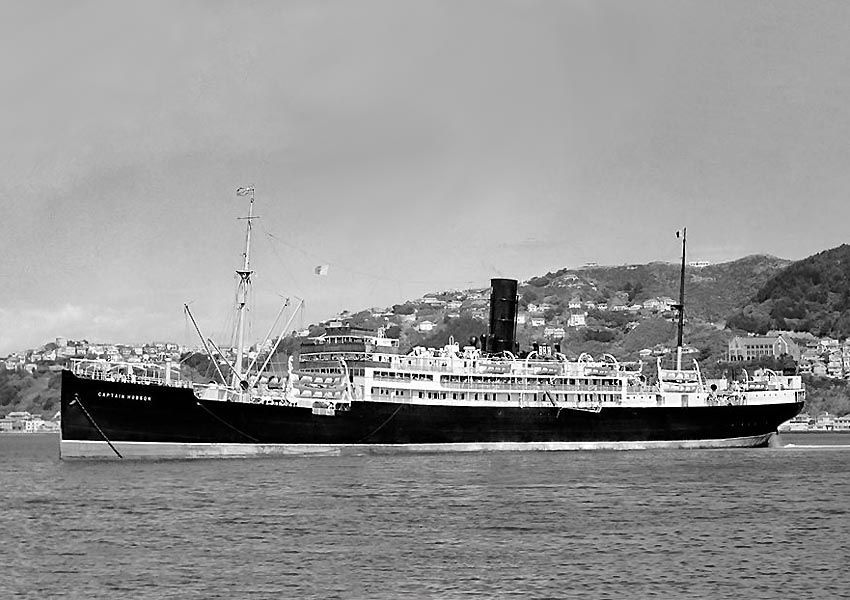
A
brand new looking liner, the S.S. Captain Hobson seen in
She continued her
Four months later in December of 1956, the
The
In
Then came the time for
Whilst crossing the
Atlantic she encountered engine trouble, although thankfully she was not far
from
For her passengers the extended voyage became more like an extended vacation, although as the voyage continued the majority of the migrants aboard where getting very low on funds and they were more than glad to arrive at their destination - Wellington.
Please
Note: I wish to thank
After all her passengers had disembarked in
Specifications 1. S.S. Amarapoora 1920 & 2. S.S. Captain Hobson:
Owners: 1. Burmah
S.S. Co. Ltd., & P. Henderson & Co., Glasgow.
. British & Burmese S.N. Co., 1935.
Owners: Ministry of Transport (
. 2.
Managed by: P. Henderson & Co, from 1920 to 1958.
************************
Built By: 1. William
Denny & Bros, Dumbarton
Yard
N°: 1062.
IMO
N°: 144211.
Launched: April 20, 1920.
Completed: July 1920.
Tonnage: 1. 8.084 GRT. 5.045 NRT.
. 2. 9.306 GRT.
Engines: Triple cylinder expansion steam engines 550 NHP, by the builder.
Propellers: Single.
Speed: 13 knots service speed - 14 knots maximum.
Length: 465.8
ft - 141.97
Width: 59.3
ft - 18.07
Draught: 30.5
ft - 9.1
Passengers: 1. 146 as built.
. 1. 124 after refit 1935.
. 1. 617 post war 1948.
. 2. 584 - 1952.
Crew: 142 to 160.
Cargo: 7 Holds with 525,340 cubic feet of cargo space.
Broken Up: 2.
************************
Part
Four
S.S. Pegu IV.
In the 1920s the Burmese S.S. Co. Ltd., and P. Henderson & Co., had a number of new ships built, including the S.S. Amarapoora, which was completed in 1920, but at the same time they also built the fourth ship to be named the S.S. Pegu, which was completed in 1921.
S.S. Amarapoora’s sister was built also
built by William Denny & Bros, Dumbarton
Like her sister the 8,084 GRT S.S. Pegu IV also had one funnel, two masts, a single screw and had a speed of 13 knots. She accommodated 150 First Class passengers in a one class configuration. Hr specifications in general are almost the same as her sisters, jus very minor differences;
Her length was 466 ft - 142 m
However, having been taken to her fit-out
berth a big problem ensued, as a joiners strike broke out and it seemed that it
was going to continue for a very long time. It was for that reason she was sent
to
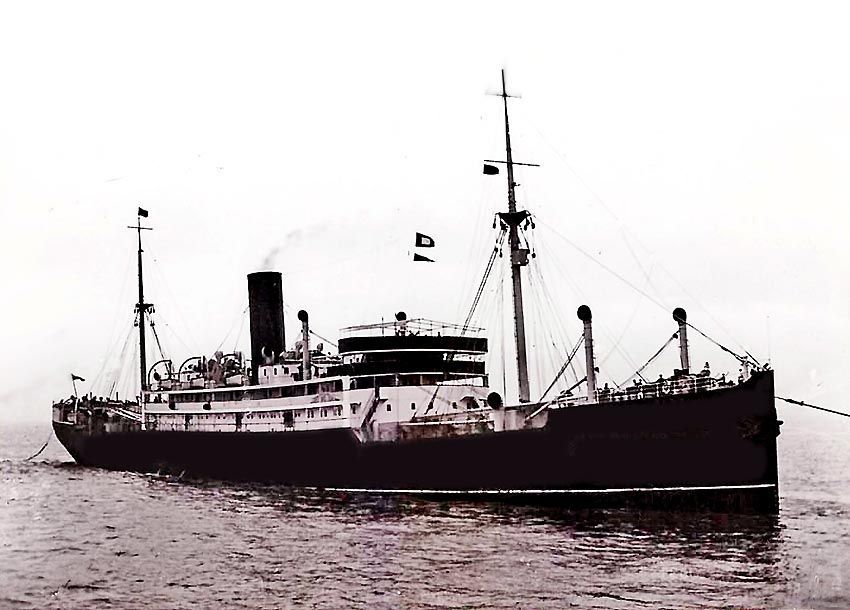
S.S.
Pegu IV is seen here in her early days departing under tow and the aft tow line
has just been dropped
Just like her sister, in 1935 SS Pegu received a refit and she had her lounges refitted as well as her passenger capacity reduced to just 124. In that same year, the company was renamed the “British & Burmese SN Co Ltd.”
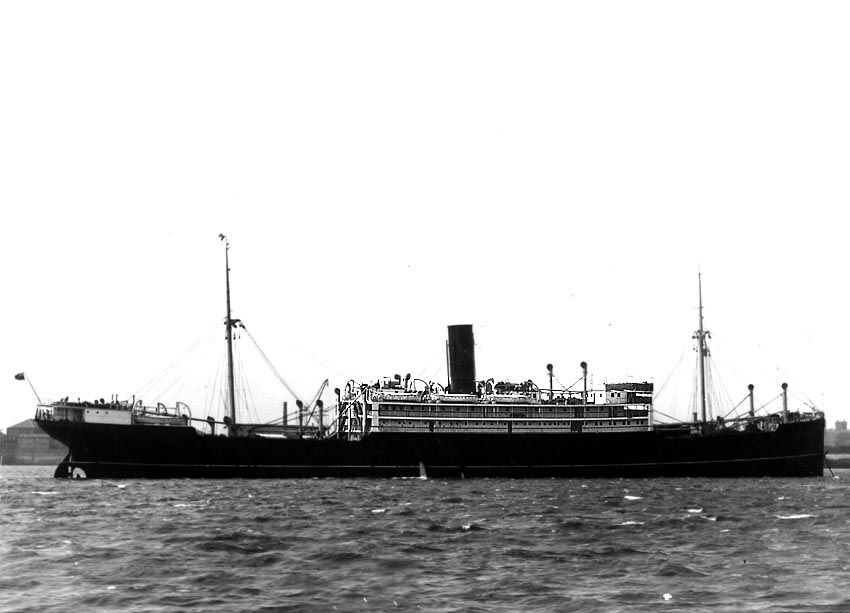
************************
I watched them come, I watched them go, and I watched them die.”
************************
This notice covers all pages, although, and I have done my best to
ensure that all photographs are duly credited and that this notice is displaced
on each page, that is, when a page is updated!
